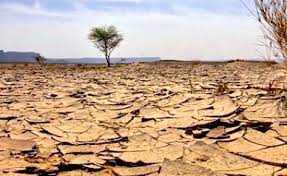
Agriculture in Nigeria and Africa depend on the rainfall. Farmers start planting when the rain starts falling and will consider quitting planting when the rain is ceasing. As a result of this, farming can be negatively affected by drought and flood in Nigeria.
Studies show that about 7% of the Nigerian popular is involved in farming. Unfortunately, majority of them only do subsistence farming in which case they only plant few things that can provide food for their family. Only very few venture into commercial or large scale faming.
Majority of those into commercial farming only plant what is called cash crop. It is also unfortunate that many of the subsistence farmers end up giving up consequent of the hardship they have to pass through while farming.
One of the major factors forcing most of the farmers to stay glued to subsistence farming is the lack of finance. Many of the farmers are unable to get finance to venture into large scale farming or maintain their subsistence farming.
Many of the commercial banks out there today will never want to give loans to farmers for many reasons. For example, the scourge of Fulani herdsmen is discouraging many commercial banks from throwing their weight behind farmers and providing the funds they need to get the job done.
The commercial banks fear that Fulani herdsmen may vandalize the farms, thereby turning the loan into a bad debt. Consequently, many Nigerian farmers are left to their fate.
Even in instances where the banks are willing to give loans to farmers, the processing period can be too long for many farmers to bear and the loans, may, therefore, not come early enough to meet the needs of the borrowers. The farmers are also required to submit several documents, many of which a subsistent farmer may not be able to provide. Additionally, most of the commercial banks demand for collateral, which many of the subsistence farmers cannot provide. So, all hope seems lost for that farmers and it seems they will have to remain at their subsistence level of farming.
Involvement of microfinance banks
One organization that remains unperturbed by the challenges of the destructive disposition of the Fulani herdsmen is the microfinance bank. Microfinance banks offer loans to farmers to enable them venture into commercial farming so that they can be more productive and profitable. There are so many microfinance banks out there today in Nigeria and many of them are ready to help farmers out.
Since inception to date, many of the microfinance banks have been helping those who want to go into crop farming and animal framing on a large scale. Microfinance bank loans are easier to access than loans from commercial banks. For example, microfinance banks do not require for collaterals. Since many farmers do not have collaterals, they find solace in the microfinance banks.
The period of loan processing by microfinance banks is also very short. As a result, the required funds will be available to the farmers very fast so that they can invest it into the farming activities. Many of the documents demanded by commercial banks are never demanded by microfinance banks and this makes it easy for farmers to have access to funds for faming very easily.
Thanks to the fund made available by microfinance banks, farmers are able to reduce more foods to better their finances and reduce food scarcity.
Microfinance banking in Nigeria
As of 2016, Nigeria boasts of up to 987 microfinance banks and the total assets deposited into the microfinance banks as of December 2016 was 326 billion naira; microfinance banks also recorded a total deposit of 149 billion naira and they gave out a total loan of 178 billion naira.
The establishment of microfinance banking was too correct many of the problems that the Nigeria financial institution was facing, which was making it difficult for financial institutions to meet the financial needs of farmers seeking for loans to boost agriculture. Some of the problems solved by microfinance banking include the following:
· Inconsistency of government policies as regards rural finance
· Financial illiteracy of the farmers and rural dwellers
· The methodology of “credit only” financial service initiates, leading to limited attention to loan application
· Operational inefficiency and financial sustainability of finance institutions and programs in the rural areas.
Microfinance banks do not just give loans to farmers; they also provide training and enlightenment programs to the farmers. As a result, the farmers can make a better use of the finances provided to them by the microfinance banks.
The microfinance banks take up the responsibility of identifying the common problems faced by these farmers, which are preventing them from making judicious use of the loans provided and teach them how to surmount those problems.
Additionally, the microfinance banks teach the farmers best practices for farm management to bring about a higher yield of farm produces, thereby enabling the farmers to make enough profit to repay the loans given out to them by the microfinance banks.
After giving loans to farmers, the microfinance banks never stop inspecting the progress of work at the farm. They continue checking the progress until the farmer has completely repaid the amount owed. This way, farmers are compelled to spend the money for the intended purpose and not divert it to something else. The operational policies of microfinance banks enable them to succeed where the typical commercial banks are unable to make headway and farmers are the better for it.
Challenges
It is true that a good number of farmers have been able to benefit from loans from microfinance banks. Be that as it may, a good number of farmers still do not have access to the loans. In most instances, many farmers are not even aware of the possibility that they can get agriculture loan form microfinance banks.
Some other sets of farmers are not able to provide the documents required by the microfinance banks, which are mere basic documents. The microfinance banks only require that the farmers provide a means of identity, passport photographs and guarantors.
The farmers are also required to pay a tiny percentage of th money they want to borrow before they are considered for the loan.
























